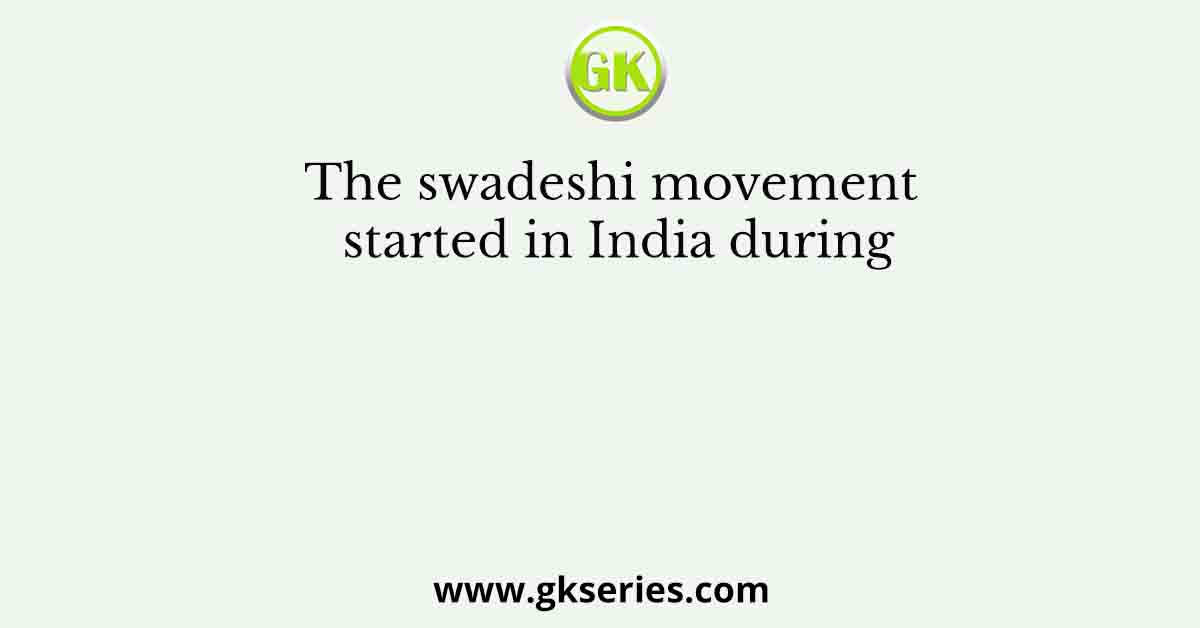
Q. The swadeshi movement started in India during
(a) the Champaran satyagraha of Gandhi
(b) the anti-Bengal partition agitation
(c) the protest against the Rowlatt Act
(d) the Non-Co-operation movement in 1919–22.
Ans: (b) the anti-Bengal partition agitation
Explanation:
The correct answer is (b) the anti-Bengal partition agitation.
The Swadeshi movement in India was a part of the Indian independence movement that aimed to promote indigenous industries and products as a means of opposing British colonial rule and stimulating the Indian economy. It started as a response to the British government’s decision to partition Bengal in 1905. The partition was seen as a divisive tactic aimed at weakening the growing nationalist movement in Bengal.
The anti-Bengal partition agitation gained momentum and became a focal point for the Swadeshi movement. It involved various forms of protest, including boycotts of British goods, promotion of Indian-made products, and public demonstrations. The movement garnered widespread support and played a significant role in fostering a sense of national identity and unity among Indians.
Although other events and movements such as the Champaran satyagraha, the protest against the Rowlatt Act, and the Non-Cooperation Movement were important episodes in India’s struggle for independence, they were distinct from the Swadeshi movement, which primarily emerged in response to the Bengal partition.





